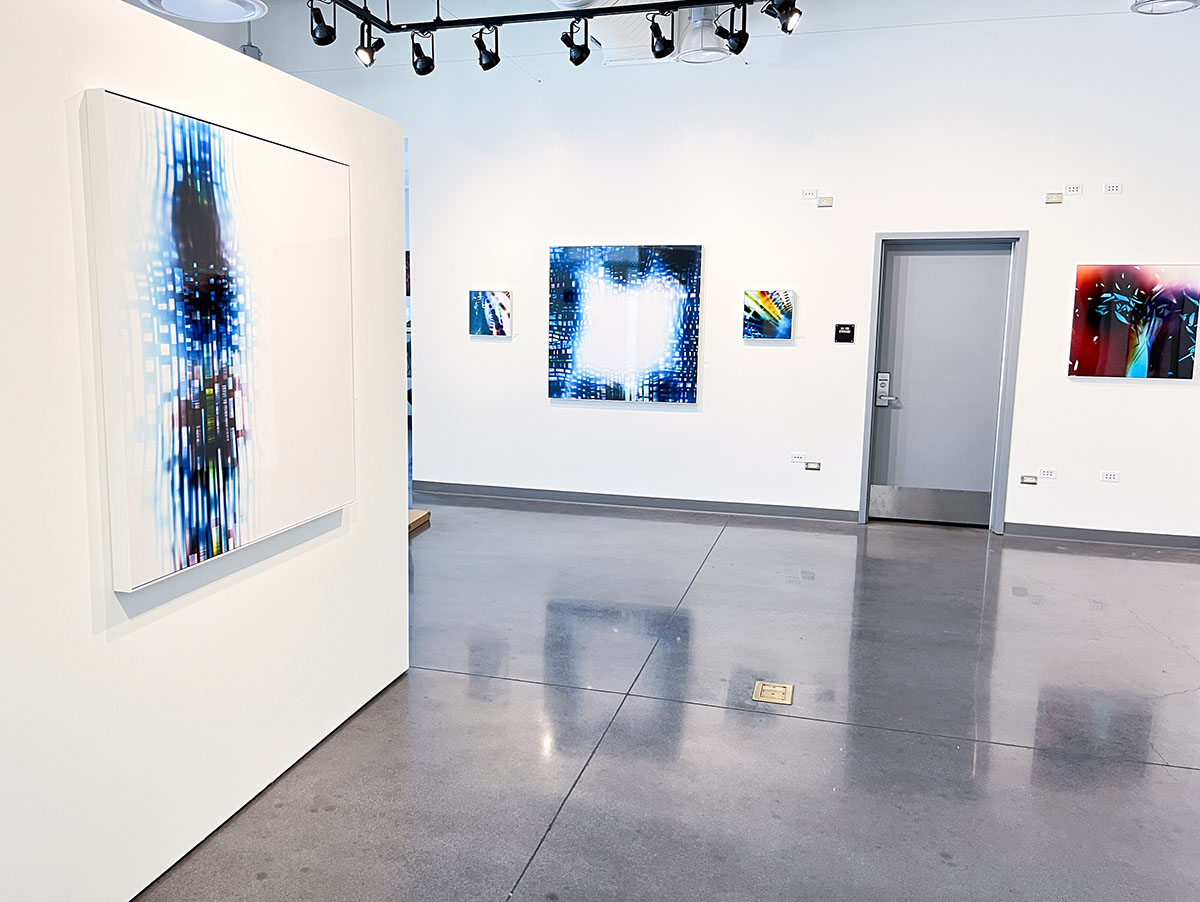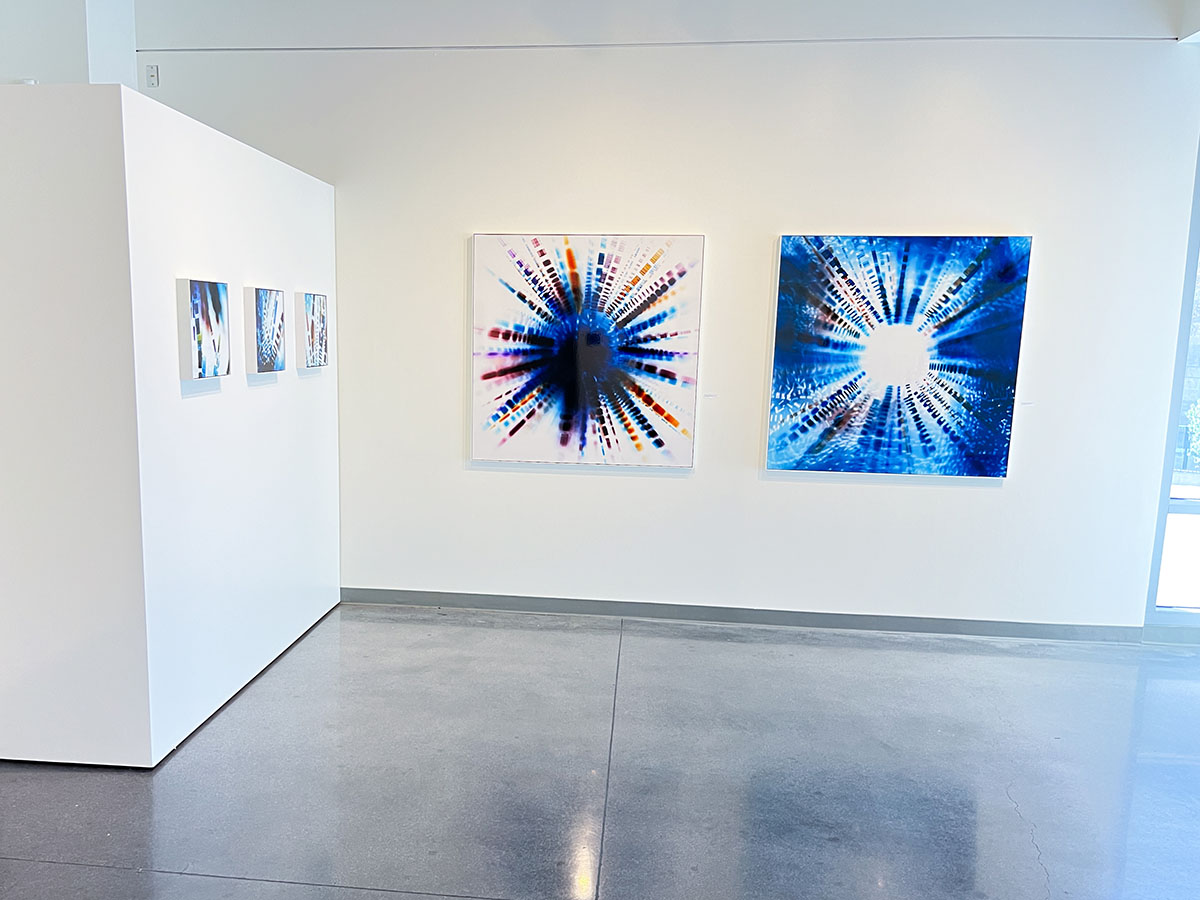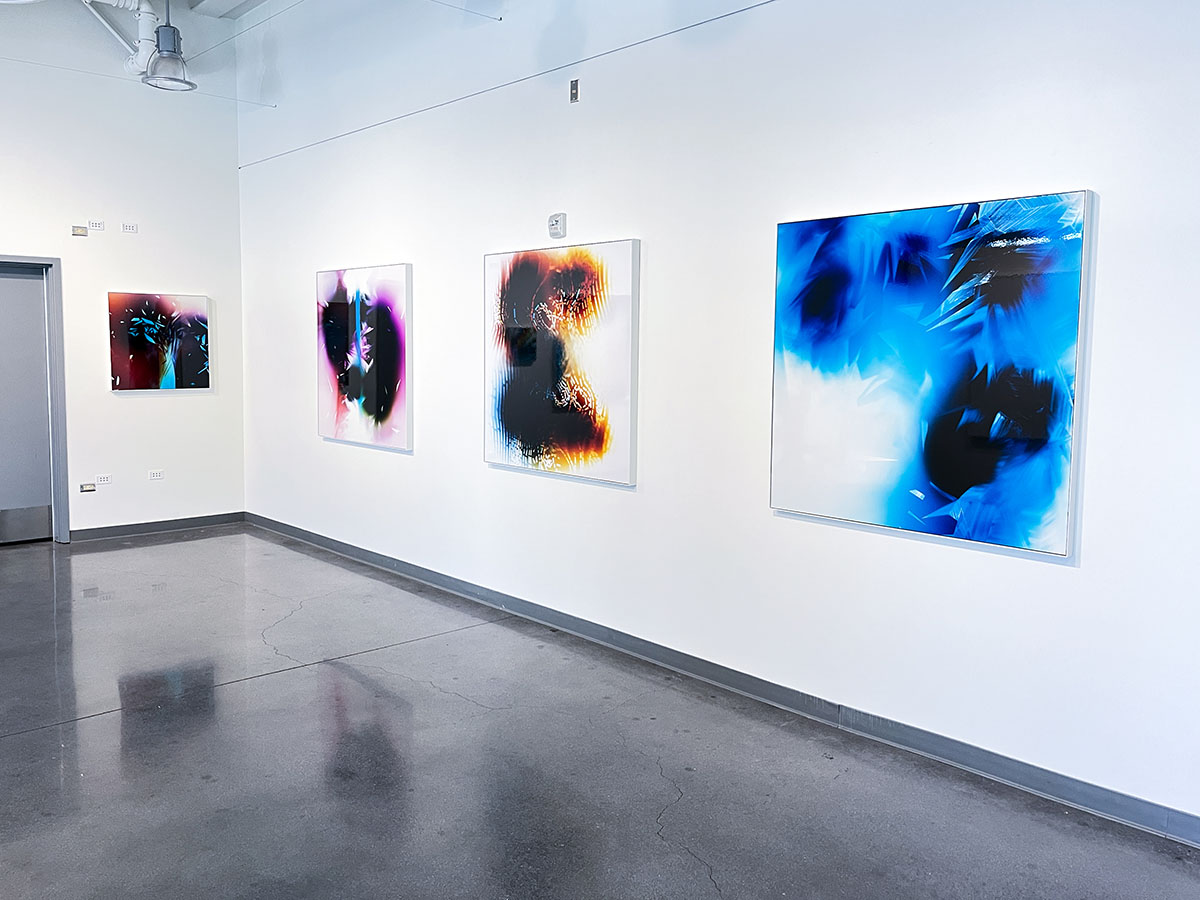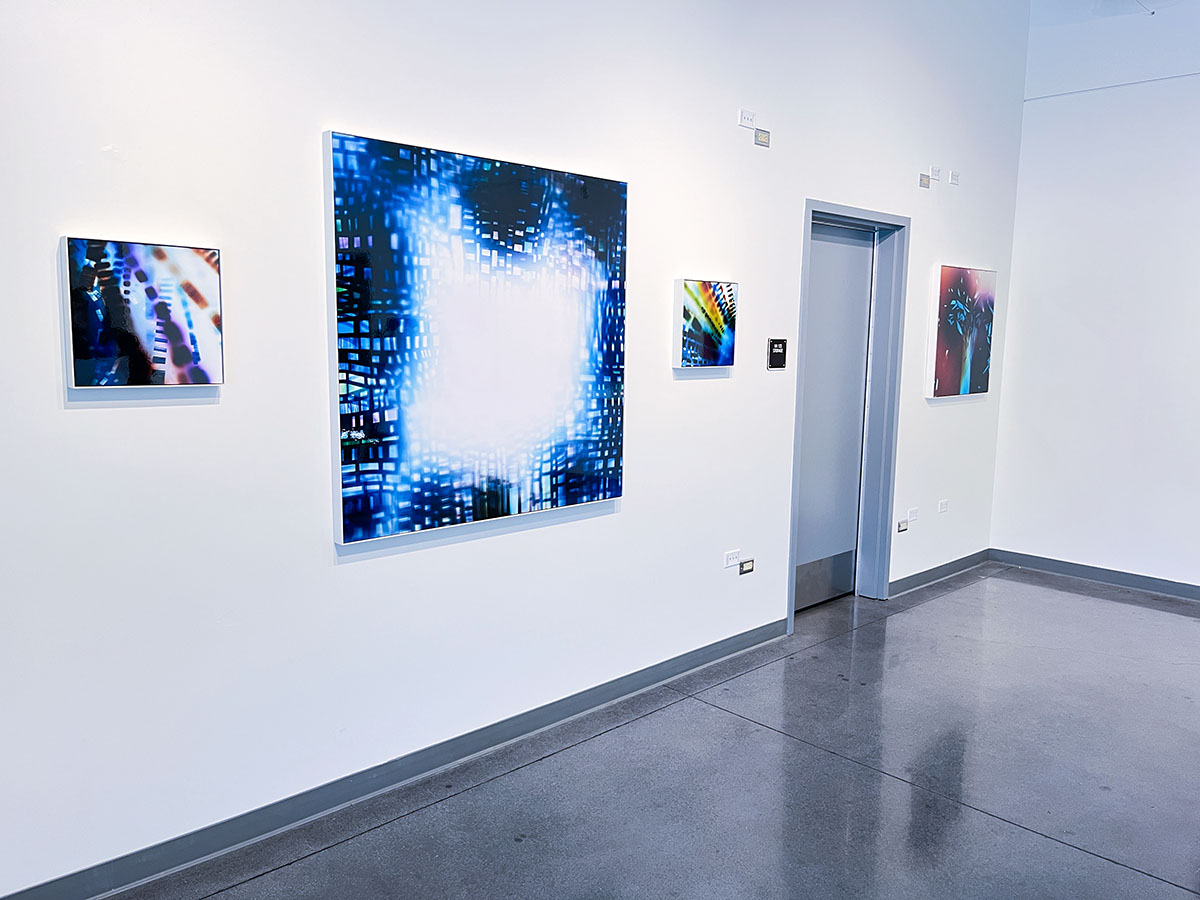EXHIBIT: Theater of Movement
Citrus College Art Gallery
Citrus College presents, Theater of Movement, a solo exhibition comprised of 17 artworks by Richard Slechta.
February 22 – May 19, 2023
gallery hours: M-F, 8:30 – 4:30
Citrus College, Glendora, CA Map
Photograms as Theater of Movement
Review by Dominique Nahas
For Richard Slechta, a composer of chromogenic photograms, light is a vehicle for expression, a conductor of vitalistic impulses, and a conduit for sensations that exist below the register of human awareness. (cont. below)

Light has long been subject of fascination for the artist as a phenomenological and psychical entity, and as a source of spatial dimensionality that he has studied for many years. It is a vitalizing and synthesizing element in the work that Slechta does that exists at the crossroads of painting, performance art, sculpture and photography. In regards to light philosopher Mikel Dufrenne, in his Phenomenology of Aesthetic Experience, writes: “…Thus light is not so much the unity which results from harmony as the unity which renders harmony possible. It is the sensuous a priori of the work by which the work can become a theater of movement.”

Photographs are always a manifestation of light, where in most cases photosensitive emulsions assimilate the light-reflections and the different degrees of brightness. Slechta’s series of one-of-a-kind photograms are visual manifestations that are the result of his intuitive explorations as he works in a darkened room wielding a penlight as a mark making tool just as one might perhaps imagine Jackson Pollock would have done had he been photographer reinventing the nature of postmodern photography. Through his practice of making his photograms in the unique way he does Slechta tells us about dimensions of space and time which normally hide their material and physical presence; he also tells us about memories and transactions in the past.

The artist manipulates the flashlight’s beam, moving it at various speeds and, using a set of gestures, goes over selected sections of pre-painted acrylic sheets that are themselves suspended in various heights over light-sensitive paper in a darkened room. The resultant photograms depict at times an extremely graphic interpretation of lineation, as well as super – saturated splats that have sharp outlines and/or blots and blobs defined through softer, more engorged, qualities that exude languorous and sensuous vitality.

The sensory photogramic milieu that Slechta creates, then, is one in which light and movement constitute a new writing rich with hidden meanings. The artist induces colored traces or marks to emerge on the surface of his photographic paper and the results are luminous, direct transcriptions of color and kinetic gesture that remain fully and mysteriously on view for the viewer to behold. Slechta’s artworks on photographic paper, unique light and color sensitive manifestations, are carefully mounted onto a stiff, archival surface of aluminum. These surfaces bearing the photographic traces, hung onto the wall, have an object quality, a presence that is shared by traditional paintings. And yet the imagery is ghostly, ephemeral and decidedly body-less. Slechta’s photographic work with its stark yet radiantly poetic presence is, in a sense, mysteriously hermetic. One is forced to react in contradictory ways to what we see as marks indicative of shaped and colored light.
As the naïve viewer peers at the photographic paper surface, Slechta’s light infused and color loaded marks appear to the beholder as image dissemination resulting from a chemical or mechanical process associated with the species of technological inventions named photography. Yet in the non-specialist’s mind photography, traditionally speaking, has extended and problematized the field of pictorial realism once dominated by painting. Slechta’s marks and traces, however, as they are non-representational, seem to relate to fleeting optical sensations and ephemeral retinal impressions. These appear wholly unrelated to the very promise held of early photography: the fixing of discernable imagery such as landscapes, documents, artifacts, portraits, and other iconography related to the past or images suggesting forensic certitude. Slechta’s hovering photo-based colors and marks, then, appear bodiless and numinous: transcriptions of another reality slightly out of reach and out of bounds.
We cannot but wonder what Slechta’s patterns and marks are derived from as his abstract photograms, by definition, are freed from the tasks of mimesis. As such, Slechta’s experimentations with a form of abstract photography attempts to open up the dialog of the very terms that constitute something photographable from something not photographable or depictable in a traditional sense. Such an unanswerable conundrum adds to the mystique and aura of the work. It enhances the provocation that Slechta provides for the viewer: daring the beholder to try to conjure up and implement of a type of new knowledge or new criteria that is not pre-formed or received in any way.
Richard Slechta’s photograms capture essences and energies: supple traces of light in their relation to space and their chronological determination. Such dynamics of illumination tells us as much about light and its qualities as it does about the artist’s mind/body dynamic as he experiences a letting-go and an oneness with his materials and process. The theater of movement and its various intensities constitute the artist’s world of photograms; it envelops us within a universe that is uplifting, vitalistic, and joyful.
Dominique Nahas is an independent critic and curator based in Manhattan.